| Author |
 Topic Topic  |
|
Xavier
Scientific Collaborator
    
France
12211 Posts |
 Posted - 21/10/2019 : 12:22:15 Posted - 21/10/2019 : 12:22:15



|
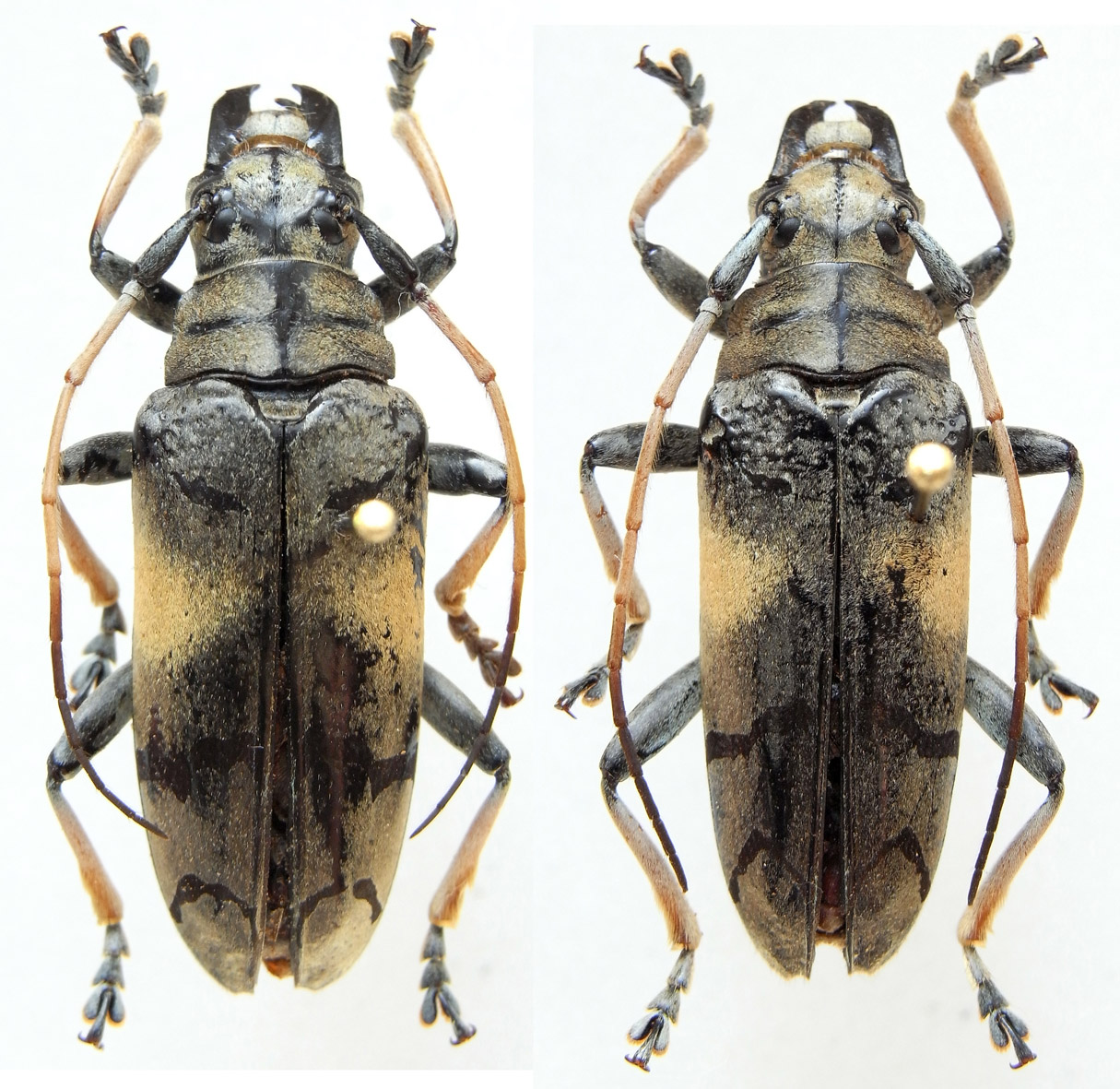
426.44 KB
Female 29 mm, male 27 mm, Pulu Pulu, Sulawesi, Indonesia. Despite the color, is it Sulawesiella rafaelae (Lansberge, 1885) as here ? |
Edited by - Xavier on 16/04/2024 16:44:18 |
|
|
Capitaine
Scientific Collaborator
   
France
1840 Posts |
 Posted - 24/10/2019 : 11:41:29 Posted - 24/10/2019 : 11:41:29



|
| Bonjour Xavier, oui je peux te confirmer, j'ai un couple semblable de même origine. |
Claude |
 |
|
|
Xavier
Scientific Collaborator
    
France
12211 Posts |
 Posted - 24/10/2019 : 12:50:40 Posted - 24/10/2019 : 12:50:40



|
| Étrange cette différence de couleur (aucune trace de bleu ! ), et je me méfie toujours des genres monospécifiques. |
 |
|
|
Xavier
Scientific Collaborator
    
France
12211 Posts |
 Posted - 24/10/2019 : 13:20:28 Posted - 24/10/2019 : 13:20:28



|
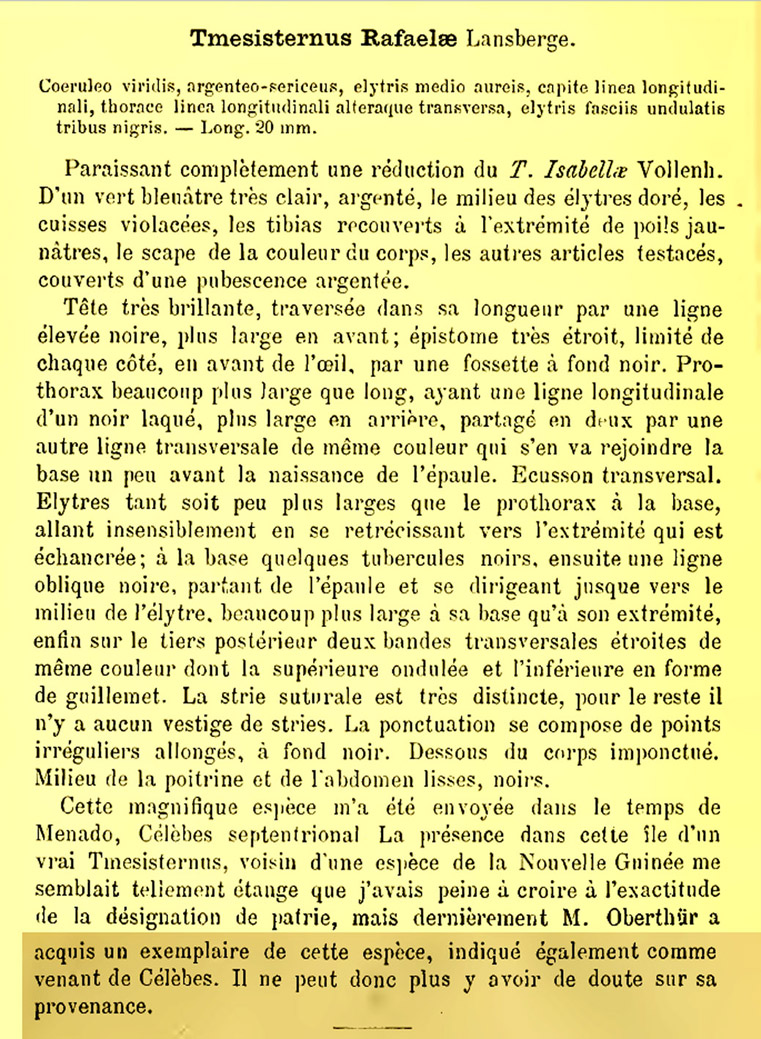
370.7 KB
Voici la description originale de cette espèce bleue. J'aimerais bien voir l'holotype... |
 |
|
|
Capitaine
Scientific Collaborator
   
France
1840 Posts |
 Posted - 24/10/2019 : 18:00:29 Posted - 24/10/2019 : 18:00:29



|
Oui, je joins une photo d'un de mes ex. Ils sont effectivement plus bleutés, la couleur correspond peut être à une forme ou variante ?
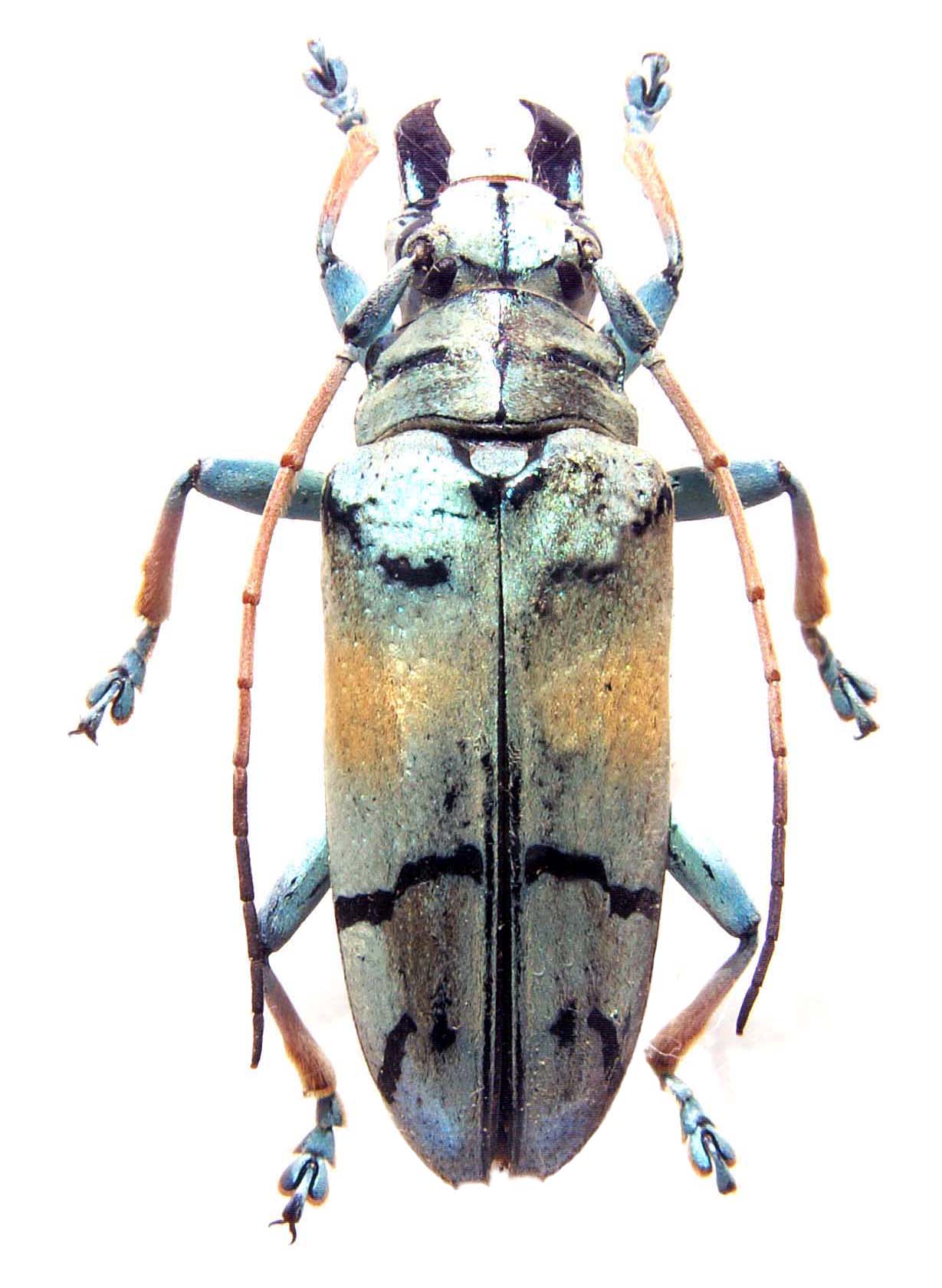
171.74 KB |
Claude |
 |
|
|
Xaurus
Member Rosenbergia
   
Germany
1923 Posts |
 Posted - 24/10/2019 : 18:30:47 Posted - 24/10/2019 : 18:30:47



|
it should be this species, the local people sometimes use petrol or kerosene to kill off and the result is a colour Change  |
 |
|
|
Xavier
Scientific Collaborator
    
France
12211 Posts |
 Posted - 24/10/2019 : 19:06:25 Posted - 24/10/2019 : 19:06:25



|
quote:
Originally posted by Xaurus
it should be this species, the local people sometimes use petrol or kerosene to kill off and the result is a colour Change 
...but I don't think that's the reason for this color. |
Edited by - Xavier on 16/05/2021 13:45:13 |
 |
|
|
Xavier
Scientific Collaborator
    
France
12211 Posts |
 Posted - 30/12/2020 : 10:15:31 Posted - 30/12/2020 : 10:15:31



|
Because it is a couple, it is obviously not Sulawesiella rafaelae (Lansberge, 1885), but more likely a new species to describe.  |
 |
|
|
Andre
Member Rosenbergia
   
Germany
1694 Posts |
 Posted - 30/12/2020 : 12:18:56 Posted - 30/12/2020 : 12:18:56



|
Ich schließe mich zu 100 % der Meinung von Xaurus an.
Habe schon mehrfach Sulawesi bereist und etliche, farblich völlig veränderte Cerambycidae bei dortigen Händlern gesehen. |
 |
|
|
Xavier
Scientific Collaborator
    
France
12211 Posts |
 Posted - 30/12/2020 : 13:16:20 Posted - 30/12/2020 : 13:16:20



|
ok.
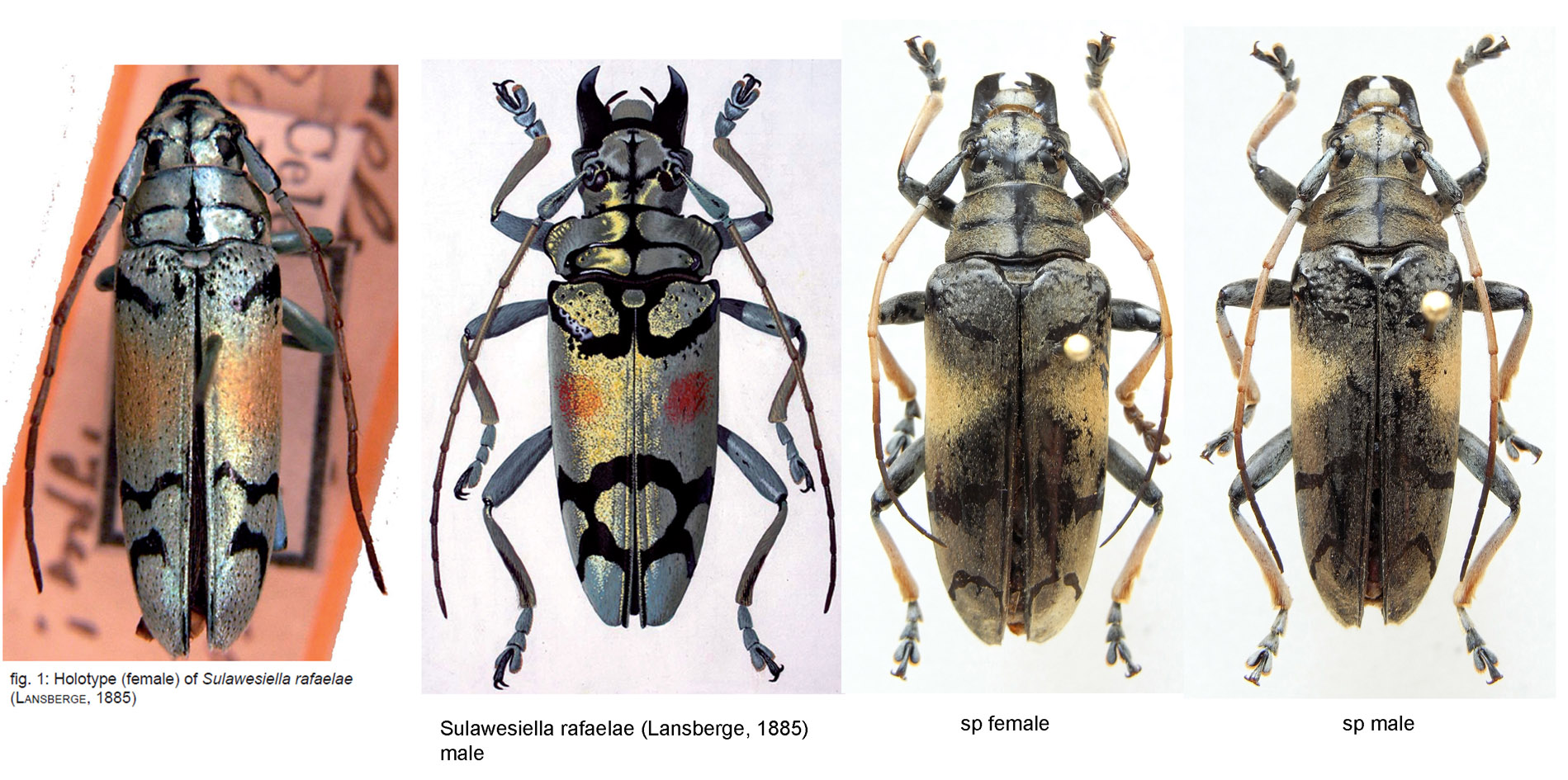
427.45 KB
It's not a matter of colour.
This is a couple (different last sternites, with or without furrow); everybody can see the different pronotum and compares length of antenna.
I just have to extract genitalia on Sulawesiella rafaelae (Lansberge, 1885). I wait for 15 specimens (next week ? ).
Es ist keine Frage der Farbe.
Das ist ein Paar (unterschiedliche letzte Sternite, mit oder ohne Furche); jeder kann das unterschiedliche Pronotum sehen und die Länge der Antenne vergleichen.
Ich muss nur noch die Genitalien von Sulawesiella rafaelae (Lansberge, 1885) bestimmen. Ich warte auf 15 Exemplare (nächste Woche ? ). |
Edited by - Xavier on 30/12/2020 13:18:36 |
 |
|
|
Andre
Member Rosenbergia
   
Germany
1694 Posts |
 Posted - 30/12/2020 : 13:49:33 Posted - 30/12/2020 : 13:49:33



|
Bei weiteren Ex. mit gleicher Färbung, womöglich noch von unterschiedlichen Fundorten..... dann wäre ich vieleicht deiner Meinung.
Ein unterschiedliches Pronotum ist bei Tmesisternus nicht immer ein Beweis für eine unterschiedliche Art ! Wir haben in West-Papua etliche Arten in großen Serien gesammelt, wobei bei einigen Arten die "Großen" Männchen zum Teil extrem verbreiterte Halsschilder hatten. Die der kleineren Männchen ähnelten denen der Weibchen. Aber Xaurus kann dir da sicher mehr helfen.....
Vieleicht kanst du ja mal nach den Tötungsmittel fragen ? |
 |
|
|
Xavier
Scientific Collaborator
    
France
12211 Posts |
 Posted - 30/12/2020 : 14:18:11 Posted - 30/12/2020 : 14:18:11



|
Ich kann nicht wissen, wie diese Exemplare getötet wurden (ich habe diese Exemplare seit mehreren Jahren in der Sammlung). Ich werde bald einen ganzen Haufen Sulawesiella rafaelae erhalten. Auch wenn ich schon weiß, dass es sich um ein Pärchen einer anderen Art handelt, wird der Vergleich der Genitalien wohl die Debatte entscheiden.
Sie werden feststellen, dass meine Exemplare in sehr gutem Zustand sind, und dass sie überhaupt nicht wie Tiere aussehen, die in Diesel getaucht worden wären...., außerdem ist die Farbe und die Anordnung der Flecken dieser 2 Exemplare identisch. Schließlich weiß ich, dass es "kleine" Männchen und "große" Männchen gibt, aber die Unterschiede liegen nicht nur im Pronotum.
Ich glaube, dass es sich eher um eine "Schwester"-Arten handelt, da dies sehr häufig vorkommt. Der letzte Beitrag über Tmesisternus wallacei (Pascoe, 1858) vs. Tmesisternus fulgens Breuning 1939 zeigt, dass es sehr ähnliche Arten in diesem Stamm gibt, und dass es leicht ist, sie zu verwechseln.
Übersetzt mit www.DeepL.com/Translator (kostenlose Version) |
 |
|
|
Xaurus
Member Rosenbergia
   
Germany
1923 Posts |
 Posted - 30/12/2020 : 19:56:35 Posted - 30/12/2020 : 19:56:35



|
Dear Xavier,
you are right, the Sulawesian faune is very rich in species, and its really possible there is another sps very near to rafaelae, f.e. the relatives of ochreosignatus and described one's by Withaar, all of them are very similar. That's why its necessary to check the genitals first, very good you get new material in a series to compare the male genitals. If the collectors f.e. using Petroleum to kill the spms often they lost their metallic colour, so the antennae and tibae are yellow, and maybe all the redish components are lost.
Its really an interesting pair, please let me know the results of your study. |
 |
|
|
Xavier
Scientific Collaborator
    
France
12211 Posts |
 Posted - 30/12/2020 : 21:13:18 Posted - 30/12/2020 : 21:13:18



|
Yes, I have also often seen insect collectors who put their hunts in bottles of local alcohol, petrol or diesel because they didn't have acetic ether. I donate a lot of hunting equipment to local collectors when I can!
For this species, I will show you here the result of my study, but I don't have too much doubt.  |
 |
|
|
Xavier
Scientific Collaborator
    
France
12211 Posts |
 Posted - 28/04/2021 : 16:13:55 Posted - 28/04/2021 : 16:13:55



|
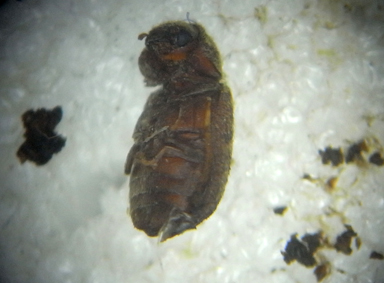
93.6 KB
Keine Genitalien mehr im Hinterleib des Männchens, sondern Sägemehl und dieser Käfer! 
Ich werde also nach anderen diskriminierenden Zeichen suchen. |
 |
|
|
Xavier
Scientific Collaborator
    
France
12211 Posts |
 Posted - 28/04/2021 : 20:12:37 Posted - 28/04/2021 : 20:12:37



|
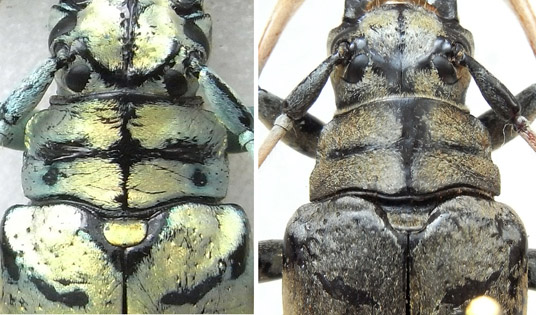
111.28 KB
Sulawesiella rafaelae (Lansberge, 1885) female vs sp. female
It is clearly not S. rafaelae. |
Edited by - Xavier on 30/04/2021 06:33:05 |
 |
|
 Topic Topic  |
|


